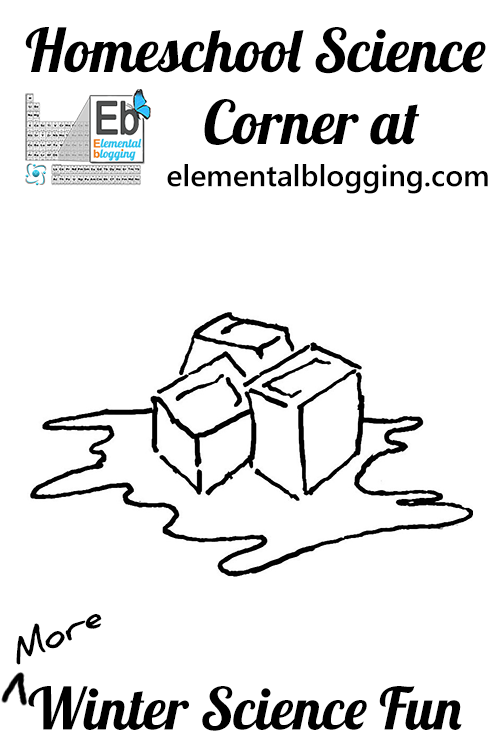 Winter is a great time to explore the principles of chemistry through experimentation. In other words, winter provides an awesome opportunity for some hands-on winter science fun! Last month I share an experiment about snowflake crystals. This month I’m sharing with you an experiment that is very cool :).
Winter is a great time to explore the principles of chemistry through experimentation. In other words, winter provides an awesome opportunity for some hands-on winter science fun! Last month I share an experiment about snowflake crystals. This month I’m sharing with you an experiment that is very cool :).
Which one freezes first?
In this experiment, you students will learn about the freezing point of water and how it can be affected. For this experiment you will need 3 cups, water, food coloring and salt. You will also need an instant read thermometer if you have older students are older. (NOTE: The meat thermometer from your kitchen can work well for this.)
Steps to Complete:
- Begin by adding one cup of water to each of your cups.
- Label each of them with #1 to #3.
- Add several drops of food coloring to cup #2 and mix well.
- Add 3 TBSP of salt to cup #3 and stir until completely dissolved.
- Place each of the cups in the freezer.
- Check you cups every 30 minutes for 3 hours to observe what is happening.
NOTE: If your students are older, be sure to have them measure and record the temperature of the 3 cups initially and each time they check the cups.
Results:
You should see that the cup #1 and cup #2 freeze at the same time, while cup #3 to quite a bit longer to freeze. Cup #3 may not even freeze in the allotted 3 hours. If you students measured the temperatures of each cup, they should see that all 3 cups were at the same temperature each time.
Explanation:
Salt lowers the freezing point of water. This means that water with salt in it will remain a liquid for longer than plain water. Food coloring has no effect on the freezing temperature of water, so it will freeze at the same temperature as plain water.
Taking it further:
Once all of your cups have frozen, take them out of the freezer and see which one melts the quickest. You can do this by setting each cup on the counter or by heating them in a pan. You should see that cup #3 (the one with the salt) melts quicker, for the same reasons in the explanation. This is why we use salt to melt ice on the driveway during the winter.
Once you finish the experiment, you can have your students read more about the principles involved in the experiment from a science encyclopedia, such as changes in state, solids and liquids. Then you can have them write several sentences about what they have learned. This will make for a complete winter science learning time, plus your students will have fun while doing it!
How about you, do you do anything special to add in some winter science fun?
 Sign up below to receive weekly tips & tools for homeschool science and we'll send you a FREE copy of
Sign up below to receive weekly tips & tools for homeschool science and we'll send you a FREE copy of 